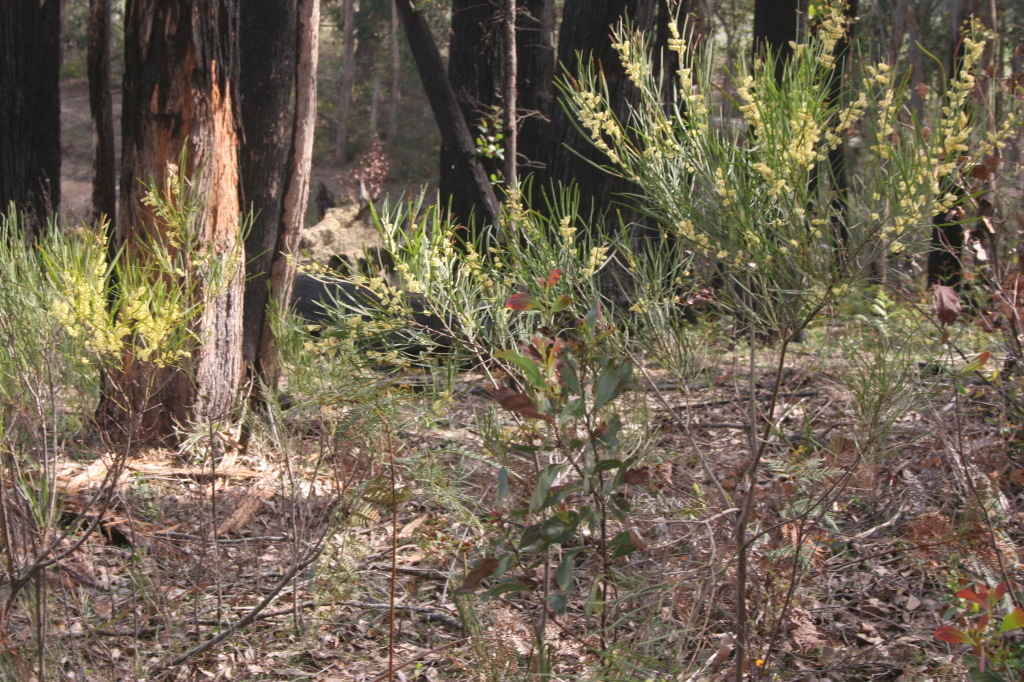Acacia mucronata subsp. longifolia
(Benth.) CourtShrub or small tree to 5 m high. Phyllodes usually narrow-linear, sometimes elliptic to obovate, (7–)9–20cm long, 1–6(–12)mm wide, mostly broadest near or below middle, commonly straight, thickish, usually acute, mucronate, glabrous or sparsely covered in appressed hairs; veins 3–4, often 1 much more prominent than others, reticulations often conspicuous; gland c. 5–15 mm above axil. Spikes 1–6 cm long, solitary or twinned, creamy white or pale yellow; rachis visible between flowers, with appressed hairs; peduncles less than 7 mm long. Flowers 4-merous, distant; sepals united, glabrous. Pods linear, 6–12 cm long, 2–5 mm wide, slightly constricted between seeds; seeds elliptic, 3–5 mm long, funicle thin, short, folded 2–3 times, aril turbinate. Flowers usually Aug.–Dec.
LoM, MuM, Wim, GleP, VVP, GipP, OtP, WaP, Gold, CVU, GGr, DunT, NIS, EGL, EGU, WPro, HSF, HNF, OtR, Strz, MonT, HFE, VAlp. Also NSW, Tas. Widespread and common in forests and woodland, mostly south of the Great Dividing Range.
See A. oxycedrus for notes about hybrids with that species.
Entwisle, T.J.; Maslin, B.R.; Cowan, R.S.; Court, A.B. (1996). Mimosaceae. In: Walsh, N.G.; Entwisle, T.J., Flora of Victoria Vol. 3, Dicotyledons Winteraceae to Myrtaceae, pp. 585–658. Inkata Press, Melbourne.
 Spinning
Spinning

